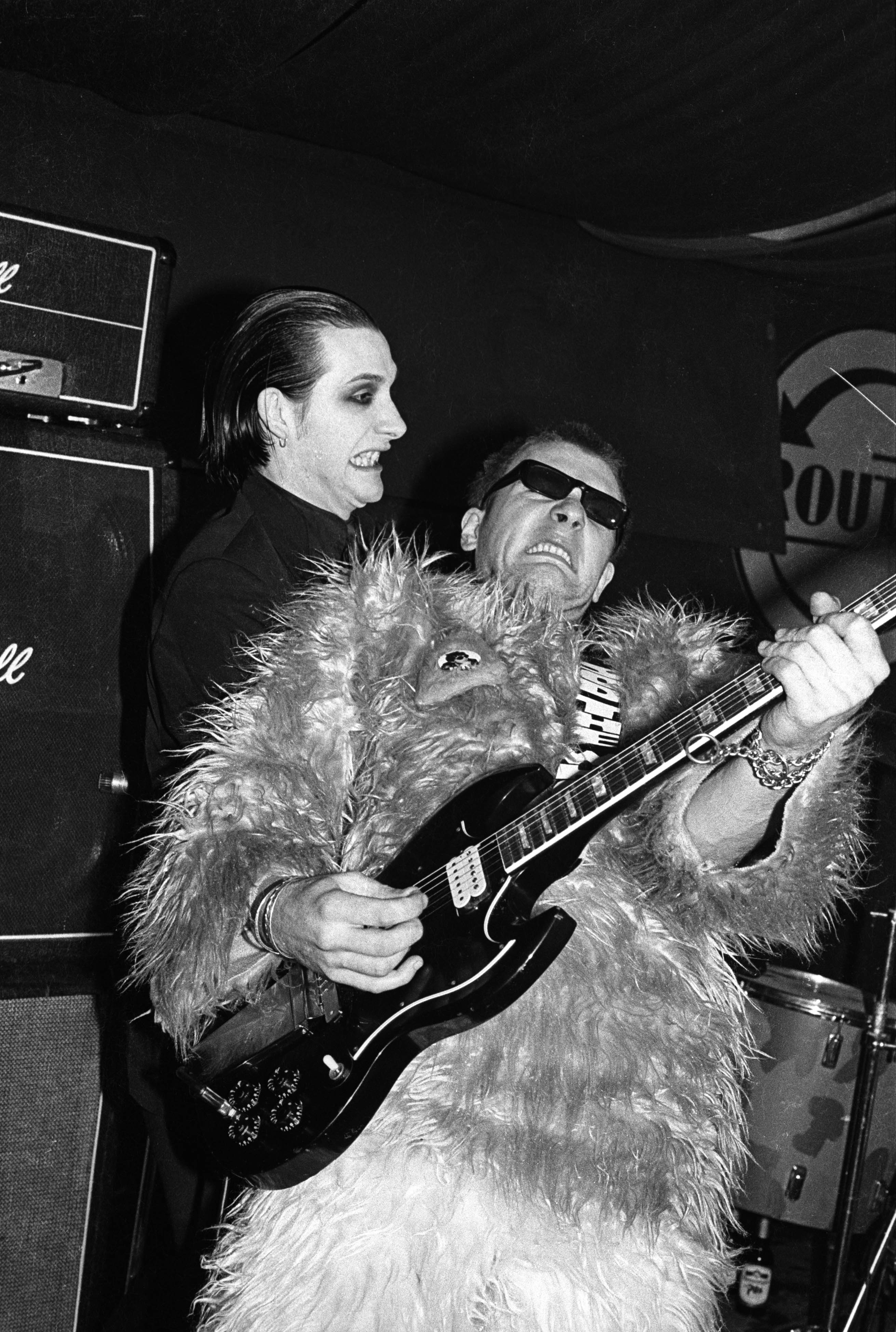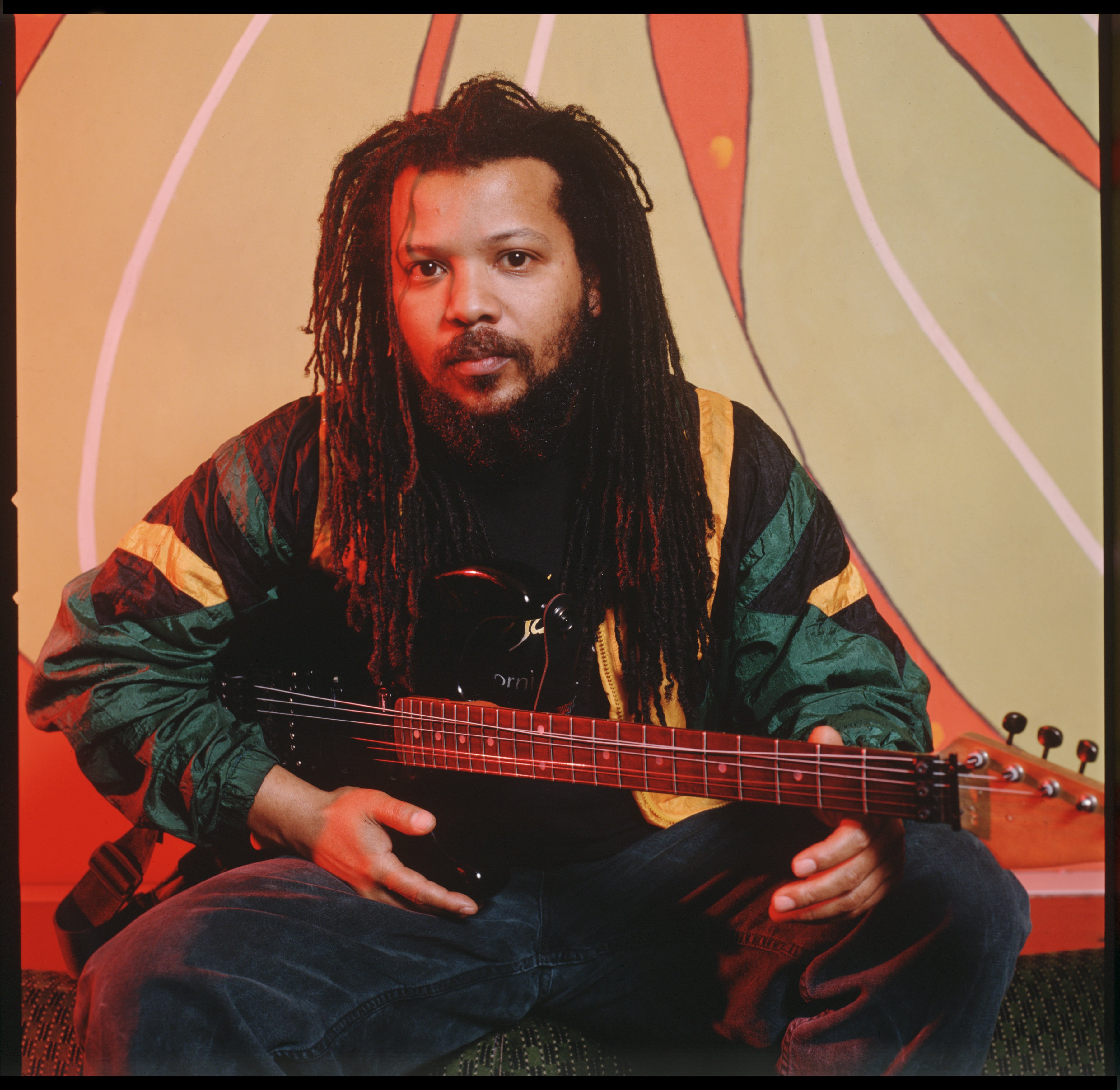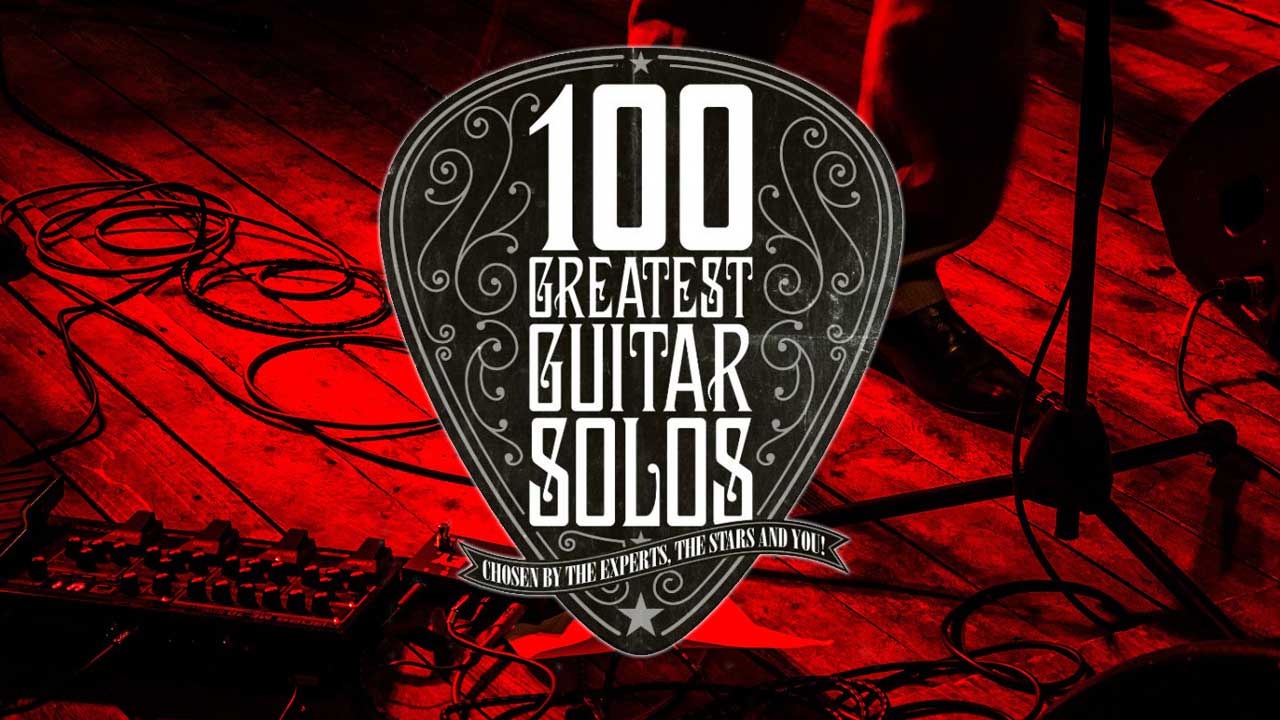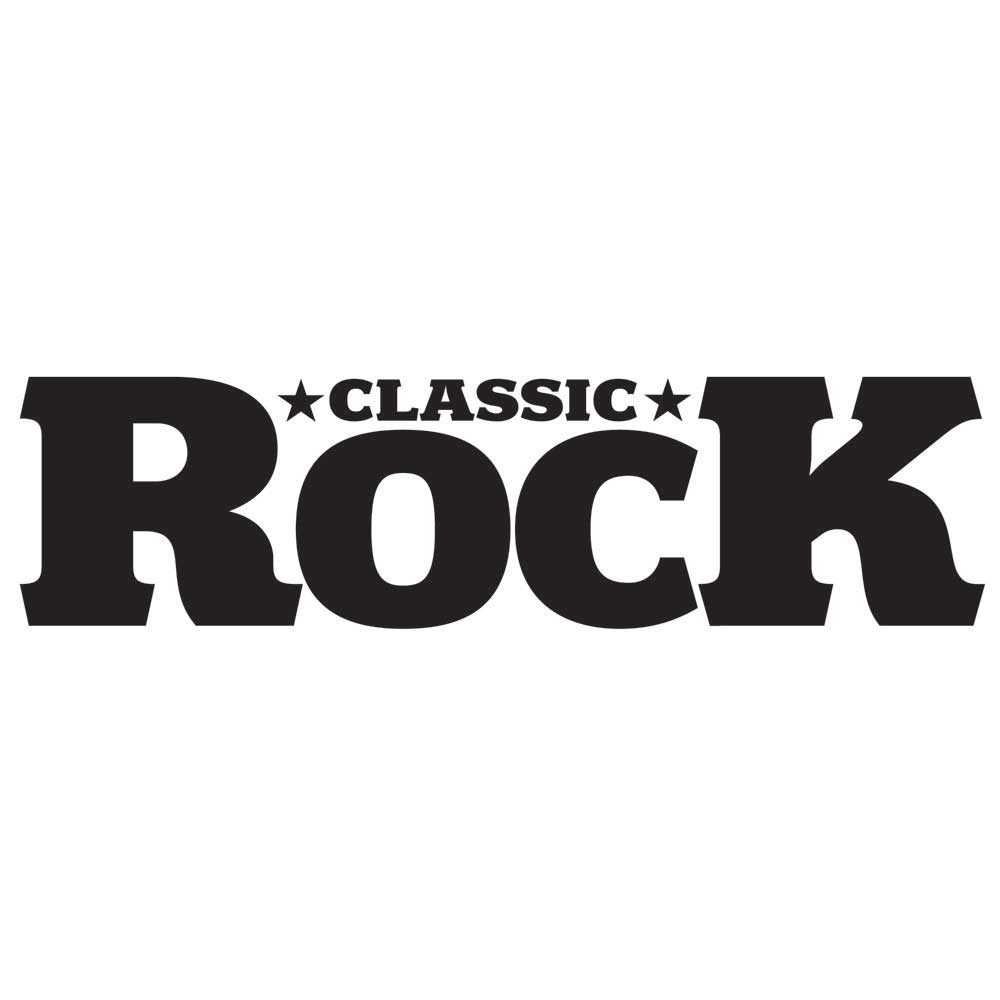Since the very beginning of time, or at least since Sister Rosetta Tharpe and Ike Turner kicked rock'n'roll into gear, there have been guitar solos.
There comes a moment in every rock song (well, most rock songs), where the verses and the choruses are forgotten, where some fellow with an axe to grind on steps towards the front of the stage and delivers break that often defines the song. In some instances the solos themselves are the song, more famous and revered than the vessel in which they live.
Our mission? To discover the guitar solos that rock fans and the players themselves love the most. Not necessarily just the solos that you’d expect to find on a rundown such as this (although, let’s face it, there are some that are just too iconic not to be included), but those that are just too good not to be.
And at the end, there's a handy Spotify playlist.

100) Mike McCready - Reach Down
From: Temple Of The Dog – Temple Of The Dog, 1991
Mike McCready: “The best solo I’ve ever played I would have to say is Reach Down, because that was a pivotal point in terms of Chris [Cornell] saying to me: ‘Hey, just go for it.’ Because prior to that I was very nervous about overplaying. I really wanted to let go but I didn’t know what my boundaries were, because I wanted to make sure the solo was respectful of this record, because it was about [late Mother Love Bone vocalist] Andy Wood. This was kind of my big moment. Chris was like: ‘Lighten up. Just do what you want to do.’ So I just went for it. And what you hear there is my first take.
“I remember my headphones falling off and I was still playing, and I was so into it I got to release something in me that had been bottled up for a long time. I was way into Stevie Ray Vaughan at the time and I was way into Hendrix. My favourite solo of all time is Machine Gun, the live version from [Hendrix’s] Band Of Gypsies, so I’m sure there were elements of me wanting to get to some level of Machine Gun. But there was no way I ever could. I was trying to pull out the licks that I had heard from Hendrix and Stevie, but I was also just trying to feel it, that was number one. When I could feel it and play it just off the top of my head, that’s when I played my best. And that’s still true today.”
99) James Dead Bradfield - You Love Us
From: Manic Street Preachers – Generation Terrorists, 1992
No track sums up the early days of the Manic Street Preachers quite like You Love Us, with its mixture of preening, aggressive, goading glam-punk arrogance, intelligent vocabulary and shamelessly ambitious stadium rock. Frontman James Dean Bradfield’s gleaming guitar solo is key to its success and helped make it the highest-charting single from their debut album Generation Terrorists (it peaked at No.16, one place higher than Motorcycle Emptiness).
Showcasing the Manics’ Guns N’ Roses influence to full effect, the closing solo has Bradfield’s fingers flying over his Gibson Les Paul as he takes the reins on this beast and rides it hard to the finish line with an amazing display of dexterity, the frantic yet polished playing immediately positioning him as one of the great British guitar heroes of the past 25 years. As statements of intent go – they honestly wanted, and expected, to be the biggest band in the world – this glorious minute-and-a-quarter of guitar-wrangling fireworks takes some beating.
On the original, single version of You Love Us, released on Heavenly Records in 1991, this vital piece of the jigsaw didn’t exist, and instead it ended on a drum sample from Iggy Pop’s Lust For Life. Its addition on the album version was a master stroke that backed up the song’s message: we’re the best new band in the world, we can prove it, now listen to this. We’re still listening.
98) Dimebag Darrell - Walk
From: Pantera – Vulgar Display Of Power, 1992
With the popularity of the guitar solo in rock music dwindling during the mid to late 90s, Pantera’s Dimebag Darrell almost single-handedly kept six-string shred alive. And what set the late, great guitarist apart from many other earlier shredders was that in addition to being raised on the usual suspects (EVH, Randy Rhoads et al), Dime’s admiration of blues players was also immense. As a result, many of the guitar solos in Pantera did contain a certain quota of speed, but also some surprisingly tasty playing.
A case in point is Walk. While it’s difficult to choose just one top Dimebag solo (Cowboys from Hell, Cemetery Gates etc), perhaps what also adds to the allure of the Walk solo is that its video is what gave the band their breakthrough in the US via MTV (via the Headbangers Ball program); the camera work in the video clip showed up-close and clearly just what the heck Dimebag was playing on the fretboard when it came to the solo.
Starting with some fleet-fingered noodling, the solo takes a surprise turn from the midway point to the end, where Dime slows things down and delivers some finger-lickin’-good licks, including one bit where he’s using two hands on the fretboard (not à la EVH, but rather to create a slipping/sliding sound). And lastly we mustn’t forget that Walk showcases one of Dimebag’s all-time great riffs to boot.
97) Bill Bartlett - Black Betty
From: Ram Jam – Black Betty, 1977
On Black Betty, Ram Jam included just about everything that makes American rock from the late 70s so great – there’s even a drum solo halfway through.
An undeniable flavour of the Eagles permeates Black Betty, too, which is perhaps unsurprising considering the influence that the band had on just about everybody in the late 70s, but Ram Jam guitarist Bill Bartlett is talented enough to ensure his licks are all his own. Just about every line is embellished with snappy guitar work, and when he really lets loose during the jaw-dropping solo you realise just how good he was. Duane Allman, Lynyrd Skynyrd, it’s all there, and he gave Black Betty that infusion of magic that ensured it’d insinuate itself into the psyche of everyone who heard it.
Although the term ‘one-hit wonder’ is somewhat disparaging, unfortunately that’s what Ram Jam were to become.
96) Captain Sensible - Love Song
From: The Damned – Machine Gun Etiquette, 1979
Music moved pretty fast in the 1970s. The Damned had fallen apart within a year of their debut album being released in February 1977, then re-formed by early 1979. And during that time, far from mellowing in their approach they seemed to speed up and sound even more bonkers. Their fans still lapped it up, though, and Love Song, from their third album, earned them their first Top 20 hit single.
That was quite a feat considering it sounds like it was recorded in a washing machine. Nonetheless, it sees erstwhile bassist Captain Sensible switching to lead guitar and demonstrating hitherto unheard of feats of axemanship. He’s almost playing on his own private record, launching into frantic squiddling licks from the intro to the verse to the bridge and back, keeping up with the furious, proto-hardcore pace of the song and then stepping to stage front towards the end with some very metal string-mangling mania.
It was a shock at the time for muso-phobic punks to hear such feats of musicianship, however anarchically delivered. And Sensible has since made the shocking admission: “I’m probably doing us down on the old punk credibility scale – we could actually play our instruments. We simply wanted to play as fast and as loud and as chaotically as possible.” He – and they – rarely succeeded more gloriously than here.

95) John Frusciante - I Could Have Lied
From: Red Hot Chili Peppers – Blood Sugar Sex Magik, 1991
On the first Chili peppers album that John Frusciante played on, 1989’s Mother’s Milk, the young gunslinger (who was only 19 years old at the time of its release) did a more than admirable job of supplying funk rock stylings similar to those by the guitarist he had replaced in the band (the late Hillel Slovak). But unlike Slovak, the newcomer leaned more towards the metal/shredder style on certain tracks. By the time of 1991’s Blood Sugar Sex Magik, however, Frusciante had experienced a complete stylistic makeover when it came to his guitar playing.
For starters, right around the time of the album being recorded he had seemingly discovered the guitar-playing style of Lou Reed and the Velvet Underground, which was the polar opposite of the highly technical shredders who were regularly gracing the covers of guitar magazines at the time. As a result, Frusciante went for feel over technique on the tracks that comprise this now-classic album, as evidenced by his the solo on I Could Have Lied.
Although it’s a bit of a ballad, which begins with acoustic guitar, the solo is a perfect example of this new approach. It certainly isn’t the most flawless/perfectly executed solo Frusciante has played on record, but the ‘heavy on feel approach’ works perfectly in the context of the tune, as the solo conveys the feel of Anthony Kiedis’s heartbroken lyrics.
94) Bernard Butler - Animal Nitrate
From: Suede – Suede, 1993
What happens when you combine the fuzzed-up riffola of Nirvana’s Smells Like Teen Spirit with the softly undulating theme tune to vintage BBC cop series Dixon Of Dock Green? Such was the unlikely cocktail of influences on Animal Nitrate, a vaulting glam-grunge paean to sexual and chemical excess from Suede’s blazing self-titled debut album. Breaking with normal band protocol, guitarist Bernard Butler wrote the backing track as a finished piece of music before presenting it to Brett Anderson, which may explain why the singer was initially cool about the song and reluctant to release it as a single. But wiser voices prevailed and Suede scored their first Top 10 smash.
The melodic spine of the song Animal Nitrate is a descending chord sequence – B minor, A, G, E – which Butler cracks open into a compact but vivid solo across the bridge, with shimmering rivulets that cascade downwards before spiralling back up and bursting like a fireworks display over the returning chorus refrain. Playing his Gibson Les Paul Heritage 80 through old-school equipment like a Vox AC30 valve amp and Boss Turbo distortion pedal, Butler also added bespoke DIY physical effects, bending the guitar neck to produce that signature pitch-warping glam-rock swagger. More than 20 years after he quit the band, this blazing solo remains an indispensable highlight of Suede live shows.
93) Dave Navarro - Three Days
From: Jane’s Addiction – Ritual De Lo Habitual, 1990
“Can you imagine if Rush were, like, into goth and did a lot of drugs?” mused Dave Navarro on Jane’s Addiction’s cultural touchstones. And it’s a summation not entirely without merit. The cornerstone of their second and best studio album, it’s appropriate that a three-section song about a three-day threesome has a three-part solo, whether consciously intended or not.
Recorded in one take – the first – in a studio control room full of Warner Brothers A&R types, and the only track on Ritual where all band members were in the room at the same time, these factors seemingly conspired to up Navarro’s game towards levels only previously hinted at. Limbering up (on his custom Ibanez) with a few open chords, Navarro ekes out a relatively simple top-end melody complementing the rolling rhythm section with admirable restraint (his powder obviously being kept dry), before dropping down through the scale with just a soupcon of flair and harmonics. He backs way off almost to inaudible for the mid-piece, single-note volume-fade violining, then the final third finds Navarro throttling a more complex variation on the original melody, with his whammy bar doing the heavy lifting, approaching Hendrix levels of abandon. The real gold, however, is the way every tonal shift and lift perfectly mirrors what is going on underneath, both antagonising and augmenting the mood, melody and feel. People talk about being ‘in the zone’. This is what it sounds like.
92) Lou Reed - Rock Minuet
From: Lou Reed – Ecstacy, 2000
STEVE HUNTER (Lou Reed, Alice Cooper): “When I first heard Rock Minuet I thought it was brilliant. It was a bold, almost vulgar glimpse of the underbelly of human relationships and experiences seen through the eyes of Lou. It definitely showcases Lou’s poetic genius.
“He told me that when he was getting ready to do the solo, he looked for one particular note that would fit and underline the intensity and angst of the song. And when he found it, the solo happened. That one note was perhaps the single most dissonant note possible but it works perfectly to underscore the vibe of the song. Lou had an unorthodox approach to soloing which you either liked or didn’t. I happened to like it because it was uniquely Lou’s and always fit his music.”
91) Dr. Know - Re-Ignition
From: Bad Brains – I Against I, 1986
By the mid-80s there were very few standout black rock guitarists around. Which was unfortunate and puzzling, as many of rock’s all-time great players from the 50s, 60s and 70s are black (Chuck Berry, Jimi Hendrix, Eddie Hazel etc). But Bad Brains’ Dr. Know provided a much-needed presence throughout the decade – and beyond.
A clear stylistic influence on subsequent players such as Vernon Reid (Living Colour), Dr. Know (real name Gary Miller) started out in Washington DC as a fusion-based player, before he and his Bad Brains mates discovered punk rock, helped trailblaze hardcore, and by 1986’s stellar BB albumI Against I had grown increasingly and surprisingly metallic in their approach. This new direction was never more evident than on Re-Ignition, one of many standout tracks on their third studio album. While its lyrics/vocals (by HR, aka Paul D Hudson) and groove are absolutely killer (the band’s instrumentalists – Doc, bassist Darryl Jenifer, and drummer Earl Hudson – could lock in together like few others at the time), it’s the guitar solo that adds another dimension. Although brief, it’s so blistering that it could (to borrow a phrase from legendary US comedian George Carlin) “strip the varnish off a footlocker”.
Interestingly, one big-time Bad Brains fan was Kurt Cobain, and when you listen to his solo on Nirvana’s In Bloom there’s more than a passing resemblance to I Against I in its approach and vibe.


